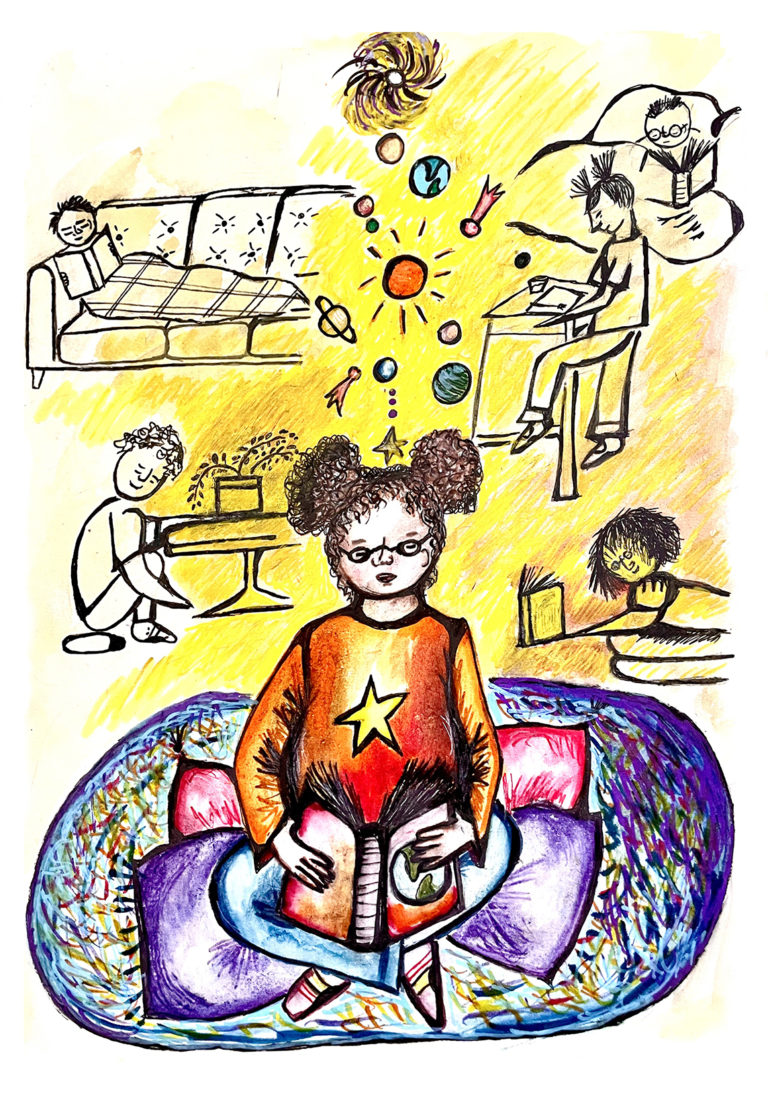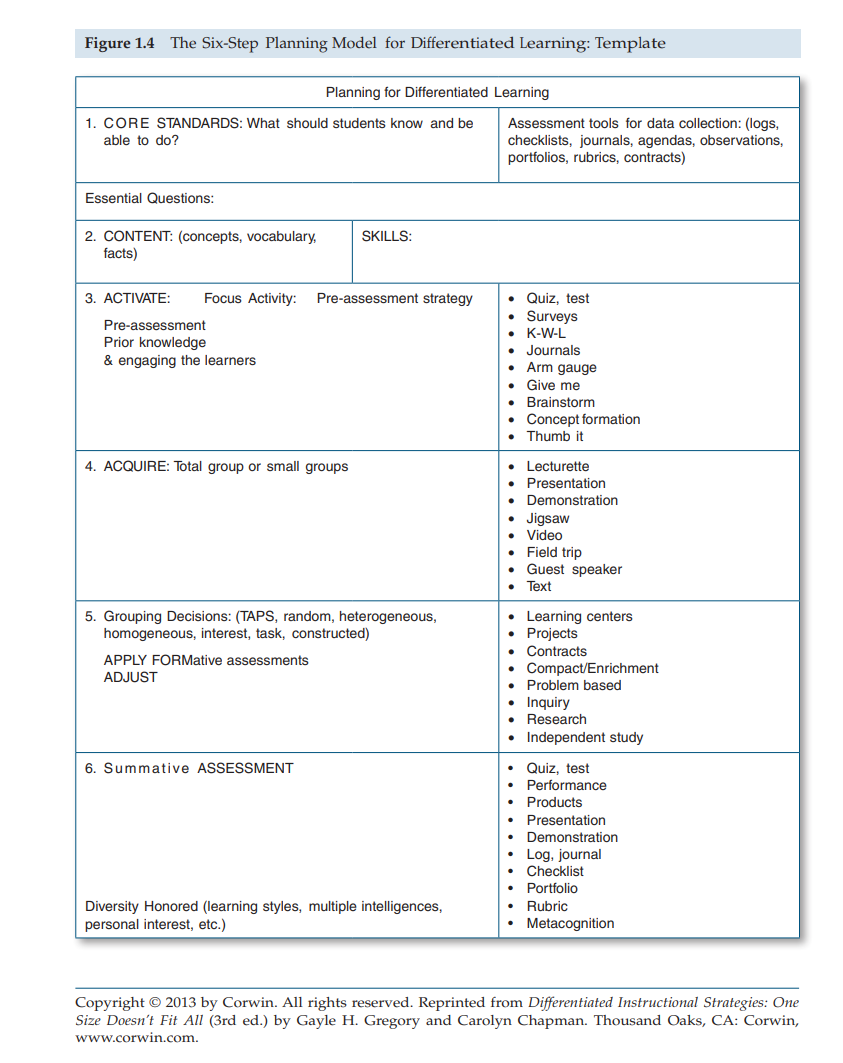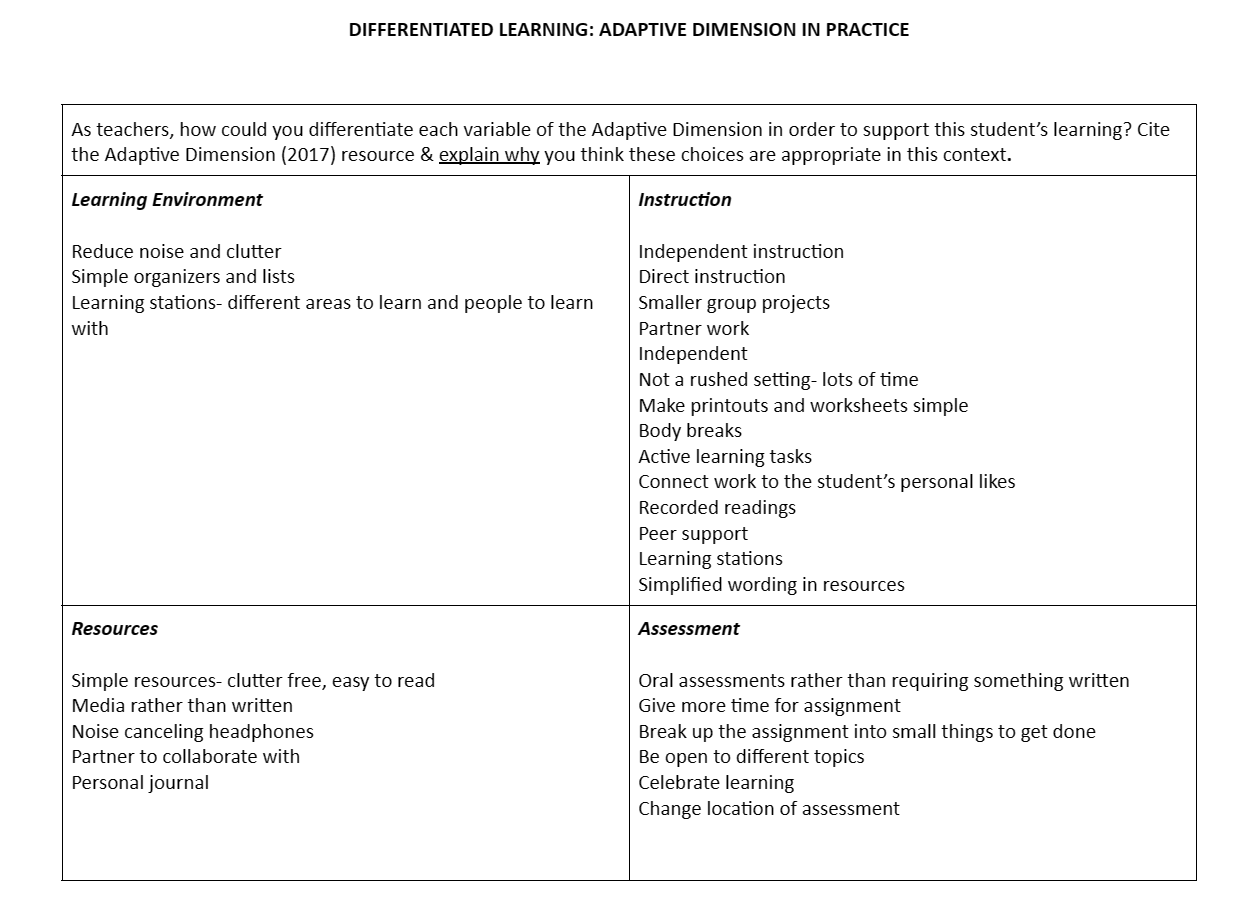“Differentiated instruction [learning] is not a strategy to be used from time to time, not a bag of tricks approach. It’s a way of thinking about teaching and learning.”
-Carol Ann Tomlinson

Illustrator: Elliot Kukla
“Understanding that the true disability is inaccessibility in schools, they seek to change their classrooms and not their students with disabilities.” Rethinking the Inclusive Classroom – Rethinking Schools
Check out my video on an instructional strategy called:
Academic Structured Controversy
“what happens when you think of kids as connection seekers as opposed to attention seekers? How does this shift help you better help students” (Carrington, 2020, p. 74).
“The mindset of teachers who are differentiating in their classrooms embraces the
following ideas:
• All students have areas of strength.
• All students have areas that need to be strengthened.
• Each student’s brain is as unique as a fingerprint.
• It is never too late to learn.
• When beginning a new topic, students bring their prior knowledge base and
experience to the learning.
• Emotions, feelings, and attitudes affect learning.
• All students can learn.
• Students learn in different ways at different times”“Teachers can strategically and effectively differentiate the following:
• content
• assessment tools
• performance tasks
• instructional strategies”


Who’s in my Pocket? A Learner Profile
When I first met Star was at the community park. I did not know Star’s age but she appeared to be around 8 years old. The first thing Star mentioned was that she was homeless, that her father wasn’t with them, and that her favorite meal was chips. Star has an older brother and two younger brothers. When I began working at the local elementary school as an EA in Caronport, Sk, I was met with the pleasant surprise that I would be assisting with Star’s IEP at school. Star is a very kind, considerate, and driven student. Star’s IEP planned independent directed instruction time, where I would work on sight words with her to help with reading and phonics. I was under the assumption that in many cases, students with IEPs struggled with a variety of challenges such as behavioral, learning, mental, or physical. This is something that is personal to me since when I was a child I also had an IEP for a time for my high-functioning ADHD, which was specifically a Working Memory disorder. I remembered struggling with learning and behavioral challenges. However, Star shifted my thinking.
Star was a student that was kind to her peers, made the lonely feel seen, and always wanted to learn and grow. She would also struggle with failure as she would be incredibly hard on herself when making a mistake. Star had areas of challenge at school that needed to be strengthened. Instead of Star being hesitant or coping through opposition, diversion or distraction as I have observed with some student’s, Star would be adamant to succeed, to keep trying, and to be impressionable to her teachers and peers. To me, Star was a wonderful representation of all students in the community classroom. That each student is individual, bright, and that everyone had their own challenges and strengths that needed to be strengthened and nurtured. Star became very attached to me because of my kindness and empathy through her learning. It made me understand that even as an EA, Star saw me as her teacher, someone to trust and to allow me to join her in learning together.
To be a successful teacher to Star, she needs to feel seen, valued, and heard. Star needs to understand that she is not the exception of the class, but accepted. These students need to be guided through their strengths to work on areas of challenge, and their challenges should not be drawn into a negative light, but as an opportunity to grow and learn. What school is all about. Star needed to know that her strengths were strong, and that those strengths would help her to overcome her challenges. Star needed to know that with the help of teachers, that Star could accomplish anything, as long as Star had loving teachers that were there to say she matters. I mentioned in the beginning that Star told me about her low-income situation, however, this did not negatively impact the response I had to Star, and it shouldn’t. Student’s that come from many different financial backgrounds should never be assumed or stereotyped based on that factor. Many intellectual student’s that I have interacted with from low-income homes offer many strengths to the classroom community, but their home life shouldn’t dictate an incapability of the student. Star has taught me that differentiation can look like taking the extra time to work on areas, while not limiting Star’s capability and offering much more encouragement than correction. My experience of teaching and learning with Star concluded with a teaching and learning moment for myself and how I can make an impact as a pedagogical figure.

